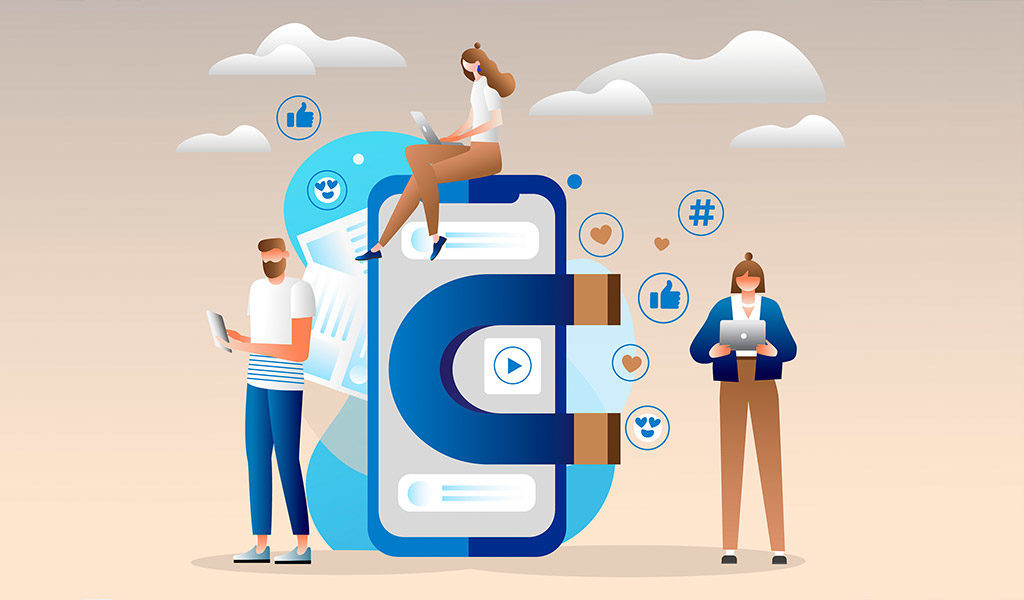
Customer Retention in eCommerce
Customer loyalty is the ultimate goal of any business because loyal customers enthusiastically recommend your brand while purchasing repeatedly. But you can’t have loyalty without first committing to a customer retention strategy.
If you follow the customer retention examples discussed below, you’ll improve customer relationships and ultimately turn repeat buyers into loyal advocates.
Why Is Customer Retention so Important for Your Business?
You’ve Done The Hard Part!
Repeat customers always make up a substantial portion of an organization’s profits, and the more times they buy, the more likely they are to buy again. One study showed that after one purchase, the customer is only 25% likely to buy from your company again. However, after two purchases they were 45% more likely to make a third purchase, and after three purchases, they were 54% more likely to make a fourth.
Even the ‘Big Fish’ companies experience high rates of shopping cart abandonment. For example, software giant Adobe reported having a shopping cart abandonment rate of 75.5% in 2016. There are lots of reasons for shopping cart abandonment but the most common are as follows:
- The cost of shipping – Your customer may get to the end of their shopping process and head to the checkout, only to find shipping costs were more than they expected.
- Trust – Customers are often wary of parting with their debit or credit card details for fear of having them exposed.
- Payment options – Some customers prefer credit card, some prefer PayPal, and some may not have their card on them and were hoping to use ApplePay or AndroidPay. If your site has limited payment options, it may deter some customers.
The good news is, if a customer has bought from you once, then they have overcome these hurdles already. You’re a lot more likely to be successful selling to an existing customer than to a new one, around 40% more likely in fact.
How to measure customer retention
Customer retention rate (CRR) is the first KPI to calculate. Specifically, CRR is the percentage of customers a brand has retained over a given period of time.
To calculate CRR, you first need to identify a period of time. The period of time you use will depend on your business, but it’s common to evaluate this customer service metric annually, quarterly, and monthly.
Once you’ve identified the correct period, you need to collect three pieces of information:
- Number of existing customers at the start of the period (S)
- Total number of customers at the end of the period (E)
- Number of new customers added in the period (N)
After you collect your data, drop the numbers into this formula:
((E–N)/S) × 100 = CRR
For example, let’s assume you had 125 customers at the start of a one-month period (S). During this period, you lost five customers but gained 30 (N) new customers. This means at the end of the period you had a total of 150 customers (E).
Your CRR formula would look like this:
((150–30)/125) × 100 = 96%
This may be obvious, but the higher your retention rate, the better. Put another way, a high customer retention rate means you have more repeat purchases and, ultimately, higher customer lifetime values.
How to Build a Customer Retention Strategy
The best customer retention strategies are formed around business goals and insights. For example, one goal may be increasing customer loyalty, and in this case, you’d want to pick strategies that focus on this. You may want to signal that your service is consistent and reliable with solid brand awareness. You may want to focus on developing a more personal relationship with your existing customers. If your customers come to your business because you offer the best prices, then your customer retention strategy should revolve around reminding them of this and get straight to costs! Whatever niche your business falls into should be reflected in your customer retention strategy and knowing what your goals are will help you pick the right strategy for your business.
1. Provide Excellent Customer Service
This may seem a little obvious at first glance, but you need to consider what a company considers excellent customer service doesn’t always match up with what the customer thinks is excellent customer service. There’s often a huge gap in perception. In fact, around 75% of organizations believe they are customer-centric, but only 30% of customers believe the same. A 2017 study found that 8 out of 10 customers are so frustrated by this that they’re actually willing to pay more to have a better experience.
Here are a couple of ways you can boost your customer service to the next level:
- Provide a cohesive and consistent experience – a customer should always feel like they’re getting the same care and attention whether you’re talking to them on the phone, via email, or on a live messaging service.
- Provide multiple contact channels to accommodate a range of communication preferences.
- Route the right agents to the right customers by assessing the customer’s needs and assigning the agent most skilled in that area.
2. Surprise Gifts and Discounts
Customers are people and people love to feel appreciated. One way you can show your customers that you appreciate them is through surprise gifts and discounts. You can offer them a discount on products they frequently purchase, along with a short and sweet message from the customer service team telling them why they are receiving the surprise. The exact wording of the message will depend on your company brand and style, but the message should make it clear that they are getting this discount for being a loyal customer.
Offering surprise gifts and discounts not only encourages customers to buy again, but it can also elevate your brand. Customers who receive surprise gifts often post them to social media, increasing your exposure which can help attract new customers to your business. Master Card expertly used this strategy to reward loyal customers by sending cardholders free surprise gifts of cupcakes, concert tickets, and VIP celebrity meetings.
3. Be Personal
You’re collecting lots of data on your customers, so use this data to improve their experience. Before reaching out to a customer you should know how they like to be contacted, what they have bought previously, and what previous interactions looked like. Customers don’t want to feel like just another number, and they will become frustrated if they have to repeat the same information over and over. By offering a personalized experience they will feel like a part of your team and associate your company with a smooth and easy experience.
4. Customer Onboarding
Onboarding will vary depending on your company’s niche, but the aim is to educate a customer about your products and your brand. You don’t want to overwhelm them with a wall of text about your business philosophy but being too quiet can make the customer feel ignored. When a customer buys one of your products, you can send them an email with a short tutorial on how to use it and the details of the customer service team, so they know who to contact if they have any issues.
